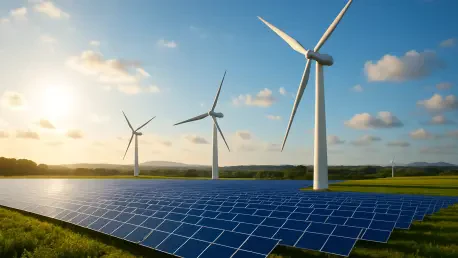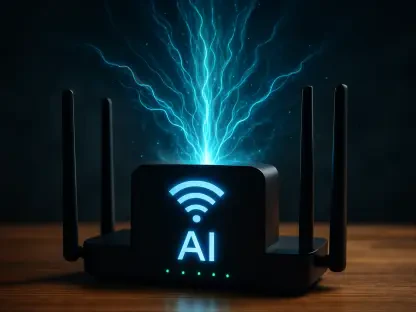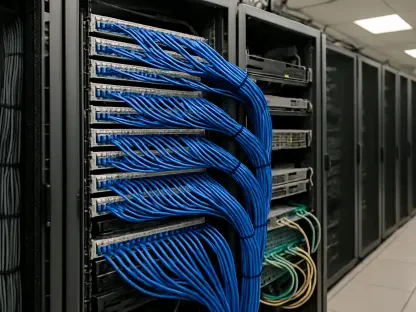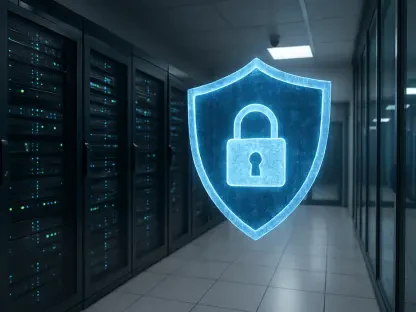The Current State of Data Centers and the Energy Challenge
The data center industry stands at a critical juncture, grappling with an unprecedented surge in energy demand driven by the explosive growth of artificial intelligence (AI) workloads. With AI inferencing accounting for a staggering 90% of compute needs, power consumption has skyrocketed, placing immense pressure on traditional electric grids already plagued by congestion and transmission bottlenecks. This escalating crisis threatens to stall the expansion of digital infrastructure in high-demand regions, where delays in grid upgrades can span years.
Major industry players like Microsoft are at the forefront of addressing these energy concerns, recognizing that reliance on conventional power systems is no longer sustainable. Grid limitations, coupled with interconnection queues, often result in the curtailment of renewable energy projects, further complicating the landscape. Sustainable solutions have become a pressing priority as data centers strive to balance operational growth with environmental responsibility.
The stakes are high, as the inability to meet power demands could hinder advancements in cloud computing and AI-driven technologies. This challenge underscores the need for innovative approaches to energy sourcing and infrastructure design. As the industry evolves, the focus shifts toward integrating renewable resources and rethinking how data centers are powered and located.
Understanding AI Greenferencing and Its Potential
Core Concept and Innovation Behind AI Greenferencing
AI Greenferencing emerges as a transformative model, proposing the colocation of modular data centers directly at wind farm sites to harness renewable energy at its source. By tapping into wind power without relying on overburdened grids, this approach significantly reduces transmission losses and alleviates stress on existing infrastructure. It aligns seamlessly with global sustainability goals, offering a pathway to power AI compute clusters with clean energy.
At the heart of this innovation lies the ability to bypass traditional distribution challenges. The model minimizes the inefficiencies associated with long-distance power delivery, ensuring that abundant green energy, often underutilized due to grid constraints, is put to effective use. A key technological advancement supporting this concept is the Heron software router, designed to manage workloads dynamically across distributed sites based on real-time wind power availability.
This integration of hardware and software solutions addresses the inherent variability of renewable energy. By routing AI tasks to locations with optimal power conditions, the system ensures operational efficiency despite fluctuating supply. Such advancements highlight the potential for AI Greenferencing to redefine how data centers interact with energy ecosystems, paving the way for a more resilient and eco-friendly framework.
Market Impact and Scalability Projections
Recent studies by Microsoft reveal the vast potential of this model, estimating that millions of high-end GPUs could be deployed at wind farm locations across various regions. This deployment capability suggests a dramatic increase in compute capacity without exacerbating grid issues, particularly in areas where power constraints limit traditional data center growth. The numbers paint a compelling picture of scalability, addressing both current and future demands.
High-demand regions, often hamstrung by insufficient grid infrastructure, stand to benefit most from this approach. AI Greenferencing offers a strategic solution to expand cloud computing services in these areas by right-sizing GPU deployments according to local energy availability. Projections indicate that over the next few years, starting from now, this model could significantly boost Azure regions currently facing power bottlenecks.
Looking ahead, the widespread adoption of such a framework could reshape the data center landscape. By enabling sustainable growth in AI capabilities, it promises to support the digital economy’s expansion while adhering to environmental imperatives. The long-term vision points to a future where renewable-powered, modular data centers become the norm, driving innovation across the tech sector.
Challenges in Implementing AI Greenferencing
The road to implementing AI Greenferencing is fraught with logistical and technical hurdles that demand careful consideration. Site-specific constraints, such as limited land availability near wind farms, unpredictable weather patterns, and the need for robust connectivity to hyperscale data centers, pose significant barriers. These factors require tailored solutions to ensure that deployments are both feasible and effective in diverse geographic contexts.
Another critical challenge lies in the variability of wind power itself, which necessitates sophisticated workload management systems. Without adaptive technologies, the fluctuating nature of renewable energy could disrupt AI operations, leading to inefficiencies. While tools like Heron offer promising avenues for dynamic task routing, their development and deployment at scale remain complex, requiring ongoing refinement to meet global needs.
Overcoming these obstacles calls for strategic collaboration with regional partners, including energy producers and local authorities, to address site-specific issues. Iterative technology development will also play a crucial role, allowing for continuous improvement of workload management systems. By fostering partnerships and prioritizing adaptability, the industry can navigate these challenges and move closer to realizing the full potential of renewable-powered data centers.
Regulatory and Compliance Considerations for Green Data Centers
Navigating the regulatory landscape is a pivotal aspect of integrating AI Greenferencing into mainstream data center operations. Regional legislation governing renewable energy projects and data center placement varies widely, often imposing strict environmental standards that must be met. Compliance with these rules is essential to avoid delays and ensure that deployments align with local sustainability objectives.
Partnerships with energy producers and grid operators are vital in this context, facilitating smoother integration into existing frameworks. These collaborations help address policy requirements and streamline approval processes for new projects. Understanding and adhering to local regulations not only mitigates legal risks but also builds trust with communities and stakeholders invested in green initiatives.
The influence of regulatory frameworks on the scalability of AI Greenferencing cannot be overstated. Policies that incentivize renewable energy adoption can accelerate the model’s rollout, while restrictive or inconsistent rules may hinder progress. As such, proactive engagement with policymakers and advocacy for supportive legislation will be key to fostering an environment conducive to sustainable data center innovation.
The Future of Data Centers with AI Greenferencing and Wind Power
Envisioning the long-term trajectory of data centers under AI Greenferencing reveals a shift toward decentralized, modular architectures that prioritize renewable energy integration. This evolution moves away from centralized, grid-dependent facilities, embracing flexibility and resilience through distributed compute clusters. Such a transformation could fundamentally alter how digital infrastructure supports AI and cloud computing demands.
Emerging disruptors, including satellite connectivity through low-Earth orbit systems and software-defined infrastructure, are poised to further shape this future. These technologies enable remote data centers to maintain high performance despite geographic isolation, enhancing the feasibility of wind farm colocation. Their integration promises to unlock new possibilities for scalability and accessibility in underserved regions.
Global trends, such as the push for decarbonization and the rising economic imperative for sustainable solutions, are driving the adoption of green data center models. As AI workloads continue to grow, the alignment of technological advancement with environmental goals will become increasingly critical. AI Greenferencing stands as a beacon of innovation, potentially leading the industry toward a more sustainable and efficient horizon.
Conclusion: A Sustainable Path Forward for Data Centers
Reflecting on the exploration of AI Greenferencing, it becomes evident that this model holds transformative potential for balancing the rapid growth of AI with the urgent need for energy sustainability. The discussions highlighted its capacity to alleviate grid stress through wind farm colocation, supported by cutting-edge tools like Heron for workload management. Despite the challenges of logistics and regulation, the vision of modular, renewable-powered data centers emerged as a viable direction.
Looking back, the analysis underscored actionable steps that stakeholders pursued to advance this paradigm. Industry leaders were encouraged to invest in green technologies, prioritizing research into adaptive systems that could handle the variability of wind power. Collaborative efforts across sectors, including partnerships with energy providers and policymakers, proved essential in navigating compliance and scaling deployments effectively.
Ultimately, the journey revealed a clear next step: fostering a unified commitment to innovation and sustainability. By channeling resources into pilot projects and advocating for supportive policies, the industry laid the groundwork for broader adoption. This strategic focus promises to address immediate power constraints while building a resilient foundation for future digital growth.









